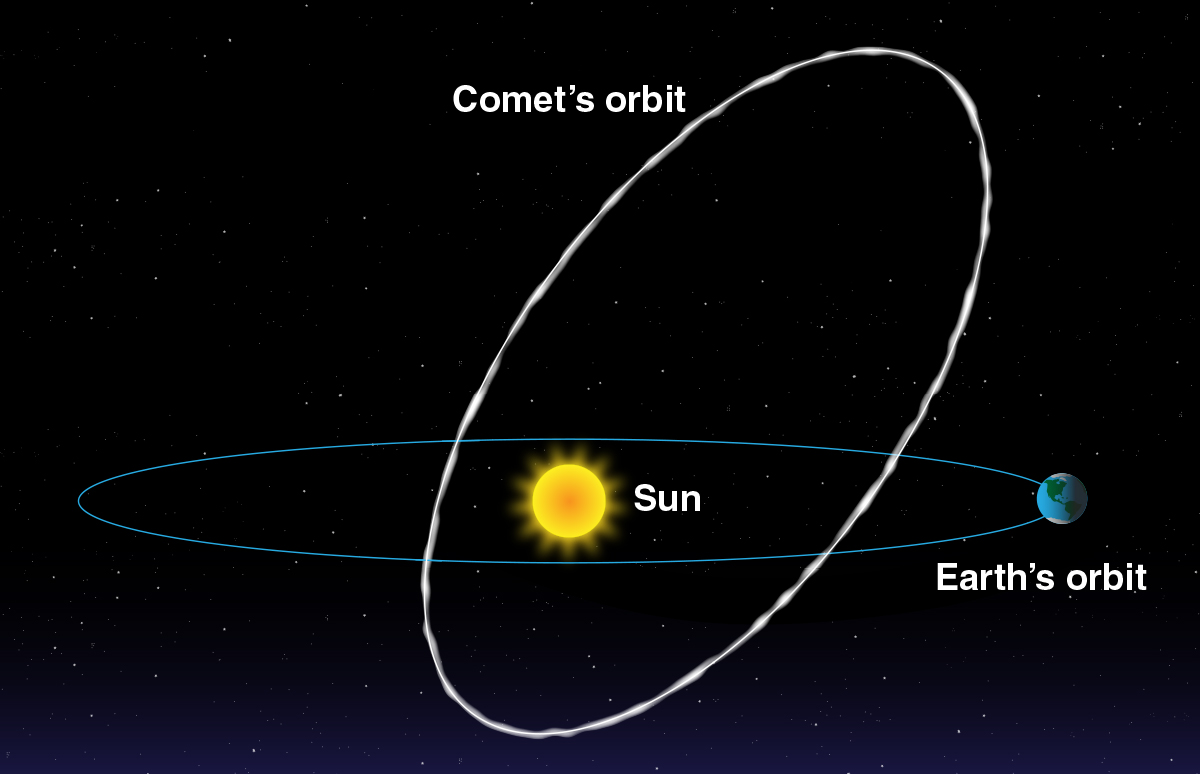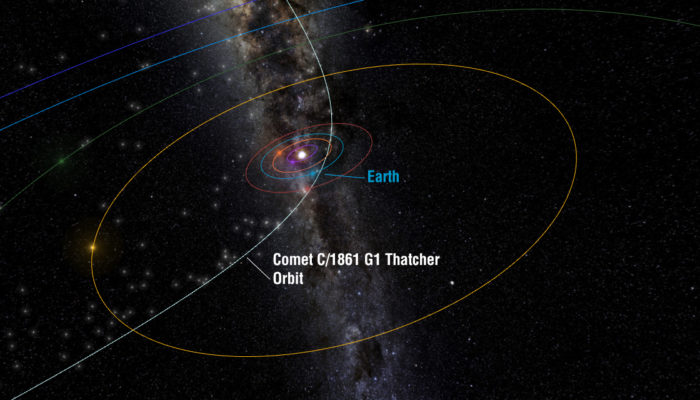Most Meteor Showers Are Associated With the Orbits of
The Geminids GEM meteor shower is associated with asteroid Phaethon Whipple 1983. Micheli et al 2008.
In most years the most visible meteor shower is the Perseids which peak on 12 August of each year at over one meteor per minute.

. Meteor showers occur when the earth in its orbit around the Sun passes through debris left over from the disintegration of comets. Since CAMS collected many orbits for most of the established meteor showers we have a reliable idea about the interval in solar longitude during which orbits could be identified for most established meteor showers. Most meteoroid particles that generate the meteors in a shower are quite small ranging in size from a grain of sand to a pea-sized pebble.
These meteor shower particles hit Earth at a speed of 58 kms and peaks around the 12th of August at 100 meteors an hour. According to the American Meteor Society the Geminid meteor shower is associated with an asteroid rather than a comet like most meteor showers. E Both A and C are correct.
Every year the earth are hit by meteor showers as it orbits the Sun Most if not all meteor showers are associated with a Meteor and when they approach the sun then the shower can be spectacular. Williams et al 2004. There are several hundred recorded meteor showers but only several dozen dramatic established ones.
The introduction of photography to meteorite studies confirmed the theory developed from naked-eye observations that meteors belonging to a particular shower have not only the same radiant but similar orbits as well. For example one of the most prolific meteor showers is the Perseids shower associated with comet 109PSwift-Tuttle. They represent Earths passage through the orbits of these comets and its collision with the streams of debris typically of sand-grain to pebble size that have been left behind.
Below is a table detailing a small number of meteor showers that we encounter every year. A Meteor shower depends on the orbital positions of the Earth and any one of the many sources of meteoroids which orbit the Sun. This replenishes the shower meteoroids.
Famous meteor showers Perseids and Leonids. This asteroid known as 3200 Phaethon orbits. Meteor showers are A usually annual events as the orbits again intersect.
Most meteor showers are known or believed to be associated with active or defunct comets. Comets continuously eject material with each passage around the sun. D Both A and B are correct.
In other words the meteoroids responsible for meteor showers move in confined streams called meteor streams around the Sun. Approximately every 33 years the. The Quadrantids QUA meteor shower is associated with the comet C1490Y1 and the asteroid 2003 EH1 Jenniskens 2004.
B caused by the Earth passing near the orbit of an Earthgrazing asteroid. Travelling in parallel trajectories the paths of individual meteoroids appear to radiate from a particular point in the sky when seen from the ground hence the term radiant to describe the direction of a showers direction of approach to Earth. The showers return annually but because.
A Meteor shower depends on the orbital positions of the Earth and any one of the many sources of meteoroids which orbit the Sun. A meteor shower occurs on the date in the year when Earth passes nearest to the band of material associated with a comets orbit. A meteor shower occurs when the Earth passes through the trail of debris left by a comet or asteroid.
NASA has a tool to calculate how many meteors per hour are visible from ones observing location. Moon and the Sun. Moon and the Sun.
There are about 20 annual meteor showers spread. For example the Orionid meteor shower which happens each October is generated by Earths passage through the debris stream strewn along the orbit of the most famous comet of all - Halleys Comet. Although the earths orbit around the Sun is almost circular most.
C caused by the Earth passing near the orbit of an old short-period comet. Meteor showers are the result of streams of debris orbiting the Sun that collide with the Earth. There are several examples of association between asteroids and meteor showers Jopek and Williams 2013.
The Leonid meteor shower peaks around 17 November of each year. There are about 20 annual meteor showers spread. Meteors are bits of rocks and ice ejected from comets as they move in their orbits about the sun.

Meteor Showers Are Coming Soon So What Is A Meteor Shower Wowk 13 News


Comments
Post a Comment